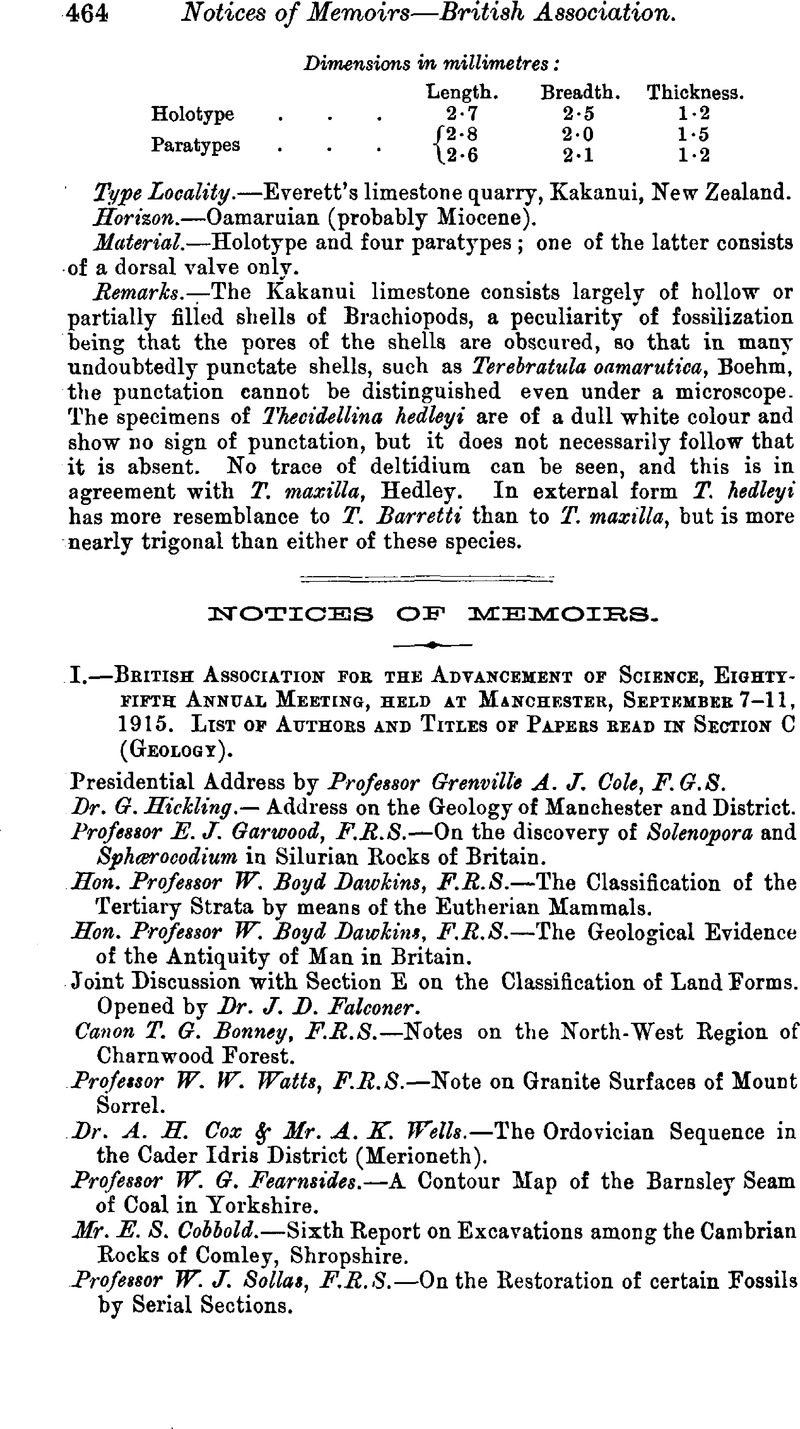Article contents
Notices of Memoirs
Published online by Cambridge University Press: 01 May 2009
Abstract

- Type
- Notices of Memoirs
- Information
- Copyright
- Copyright © Cambridge University Press 1915
References
page 466 note 1 These views were admirably expressed by Professor Hull, E., who in advocating them in 1868 succinctly remarked (Q.J.G.S., 1869, p. 331): “Immediately upon the close of the Carboniferous period the northern limits of the Yorkshire and Lancashire Coalfields were determined by the upheaval and denudation of the beds along east and west lines, while the coalfields themselves remained in their original continuity across the region now formed of the Pennine hills from Skipton southwards, and that at the close of the Permian period these coalfields were dissevered by the uprising of the area now formed of the Pennine range by lines of upheaval ranging from north to south.”Google Scholar
page 472 note 1 The skeletons of Galley Hill, in Kent, and probably that of Cheddar cave in Somerset, have, in my opinion been buried, and do not belong to the Pleistocane age. They are either prehistoric or even historic.
page 472 note 2 Mitt, . der Geog. Gesell. in Hamburg, xxvi, p. 133, 1912.Google Scholar
page 472 note 3 xxxi, p. 57, 1915.
- 1
- Cited by




